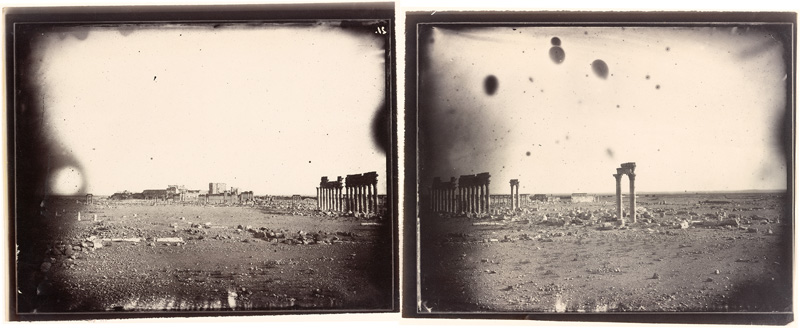Colonnade Street
Palmyra's monumental colonnade is similar to those in several major urban centers in the eastern Roman Empire, yet it stands apart decidedly in scale and decoration. Built in segments over the course of more than a century, this famous covered street originated in the west of the city, where an inscription dates the transverse section to before 158 CE. Although the easternmost section leading to the Temple of Bel was never completed, the colonnade, by cutting through the city, was designed to link this latter temple complex with the Funerary Temple located at the city's western edge. Grand in scale, with its main axis measuring about three-quarters of a mile long, Palmyra's colonnade featured a row of brackets projecting from the columns on either side that originally held hundreds of life-size bronze statues. Inscriptions on these brackets recorded that the earliest western transverse section was erected by the Bene Zabdibol and the western section of the main axis by the Bene Mathabol, two of the city's prominent civic tribes, while the latest section near the theater held 40 inscriptions honoring individuals or incorporated groups, 11 of which refer to the reign of Odainat and Zenobia (263–272 CE).
Besides functioning as a major artery in the ancient city, the colonnade was a place for trade and commerce, a function that continued into the Islamic period, as excavations have revealed. Twentieth-century restoration campaigns re-erected some 80 Corinthian columns that once flanked the street. Though Cassas's prints and Vignes's photographs capture the impressive linear expanse of the colonnade, what is impossible to grasp from these images is how, in the first centuries CE, this covered passageway represented the pinnacle of refinement in urban architecture, shading and articulating the street with moving patterns of light while the endless line of statues towering above on both sides visually set the tempo for official processions and reminded citizens and visitors of the city's civic underpinnings.











